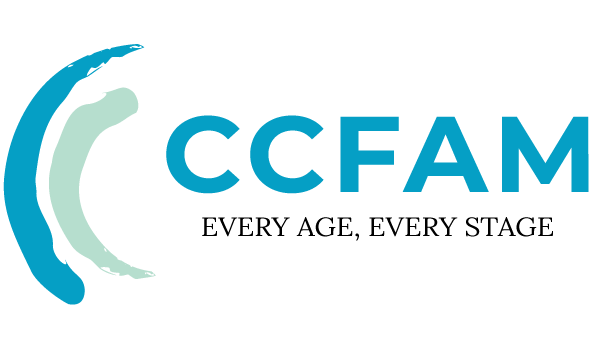11 May How Play Therapy Helps Children Express Themselves
Understanding children’s neurodevelopmental and psychosocial needs can be challenging—especially when they cannot fully express complex emotions in words. Play therapy for children offers an evidence-based, developmentally appropriate approach that uses play as a primary means of communication. Unlike traditional adult talk therapy, this DSM-5–aligned intervention enables children to process experiences through sensorimotor engagement and symbolic play. In this guide, we explain how child-centered play therapy (CCPT) supports emotional expression, summarize play therapy techniques validated in U.S. research, and outline the clinical benefits of play therapy counseling.
How Does Play Therapy Differ From Adult Psychotherapy?
Play therapy, developed in large part through the work of Dr. Garry Landreth and others, is a trauma-informed therapeutic framework tailored to children—commonly used with ages 3–12. While adult psychotherapy typically relies on verbal processing and insight, play therapy uses toys, art, and play activities as a child’s “language.” The Association for Play Therapy (APT) describes these symbolic media as the vocabulary and grammar of a child’s inner world.
This approach is consistent with developmental theories (such as Piaget’s stages), and it allows children to:
- Externalize feelings and stories through sand tray narratives
- Process traumatic memories with structured, directive play sequences
- Practice emotional regulation and perspective-taking using dollhouse or role-play scenarios
Evidence-Based Benefits of Play Therapy
Recent U.S. research highlights several clinical benefits that have been associated with play therapy:
- Enhanced communication: A 2023 study reported improved emotional articulation using puppet-based interventions (Boston Children’s Hospital trial).
- Emotional regulation: Neuroimaging studies have observed increased frontal lobe activation during therapeutic play, suggesting engagement of regulatory networks (UCLA study).
- Improved self-esteem: Play techniques rooted in Eriksonian principles have been linked to gains in confidence and autonomy.
- Stronger problem-solving and executive skills: Targeted block-play and guided play interventions have shown benefits for children with attentional challenges (CHADD report, 2022).
Play Therapy Techniques Commonly Used in U.S. Clinics
Leading clinics and clinicians often draw from APT-recommended approaches. Techniques commonly used in play therapy counseling include:
- Directive Play Therapy: Integrates CBT-informed play scripts to address specific behaviors and skill deficits (for example, protocols used in some child study centers).
- Non-Directive (Child-Centered) Play: Based on Virginia Axline’s work, this approach emphasizes the therapist’s reflective tracking and unconditional acceptance to promote self-direction.
- Art Therapy and Expressive Arts: Uses drawing, painting, and other media to externalize feelings; validated by professional art therapy organizations.
- Sand Tray Therapy: Uses miniature figures and scenes to represent inner narratives; many clinicians report meaningful trauma-processing outcomes with this modality.
The Clinical Process: How Play Therapy Typically Works
According to APT guidelines and common clinical practice, effective play therapy often follows a phased model:
- Rapport building: The first 2–3 sessions focus on safety and relationship through attachment-based play and predictable routines.
- Assessment: Play-based observation and structured tools (for example, interaction measures and standardized play assessments) help the therapist understand strengths and needs.
- Processing and intervention: The child uses play to explore themes, practice new skills, and integrate experiences; interventions are adjusted to developmental level and goals.
- Termination: Therapists use structured goodbye rituals and review gains to consolidate progress and prepare for transition.
Research on Outcomes
Peer-reviewed literature supports play therapy for a range of child mental health concerns. Findings reported in recent studies and reviews include:
- Significant reductions in PTSD symptoms among foster children in controlled trials.
- Improvements in social reciprocity and engagement for some children on the autism spectrum.
- Decreased oppositional and behavioral problems following parent-inclusive approaches such as filial therapy.
FAQs: Evidence-Based Answers for Parents
1. How long does play therapy take to show results?
Many children show measurable improvements within 12–16 sessions of protocolized play therapy, though individual response varies depending on age, presenting concerns, and consistency of attendance.
2. Can play therapy help with school-related anxiety?
Yes. School-based play therapy programs that incorporate transitional objects and gradual exposure techniques have reported reductions in separation and school-related anxiety. Collaboration with teachers and school staff often enhances outcomes.
3. What credentials should a play therapist have?
Look for clinicians who hold relevant professional licensure (e.g., licensed professional counselor, psychologist, social worker) and additional play-specific training. The Registered Play Therapist (RPT) credential through the Association for Play Therapy indicates specialized education and supervised experience in play therapy. For credential details, see the APT credentialing information (Association for Play Therapy).
4. Does Medicaid cover play therapy?
Coverage varies by state. In many states, Medicaid reimburses for play therapy services when provided by appropriately credentialed clinicians and billed under applicable behavioral health service codes. Families should check with their state Medicaid office or their clinician’s billing team for specifics.
Conclusion: Next Steps for Parents
Play therapy is widely regarded as a developmentally appropriate, evidence-informed option for supporting children’s emotional and behavioral health. To take practical next steps:
- Download the APT’s Parent Guide to Play Therapy or review their resources for families (Association for Play Therapy).
- Search for RPT-certified or otherwise specialized providers in your area and ask about their experience with your child’s concerns.
- Request a brief consultation (many clinicians offer a 10–20 minute call) to assess fit and to discuss goals and logistics.
For more research-backed information on child mental health and therapeutic options, consider these resources: the National Institute of Mental Health’s child and adolescent mental health overview (NIMH), the American Psychological Association’s materials on evidence-based treatments (APA on play therapy), and reputable clinical summaries such as the Verywell Mind article on play therapy (Verywell Mind).



Sorry, the comment form is closed at this time.